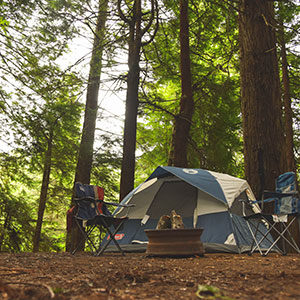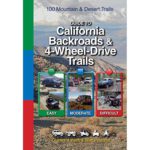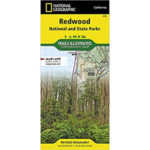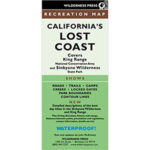Overlanding the Lost Coast of California
Published on June 25, 2021
Taking our series back to the Pacific Coast we have the properly named Lost Coast of California of course. This is another fun adventure to go on and can be accomplished by people who do not necessarily have the most experience, but we’ll talk about that more later on. Regardless of the difficulty, the Lost Coast is a great place to visit and get some sand and rocks under your tires. Enjoy the article!
How Difficult is the Lost Coast?
Overlanding the Lost Coast is not technically difficult. When it comes to the technical rating it is considered green to very mild blue. If you haven’t read one of our other articles before, the ratings are similar to what you would see on ski slopes. So green is the easiest and blue is the second easiest, so it is not that difficult despite being a very long trail. It is actually 177 miles long with a suggested length of two to four days.
To add to the difficulty is dirt forest roads which include a few steep sections. This may seem natural and typical for overlanding, but it is the mild erosion and ruts that adds to the difficulty of the trial as well. You must also look out for muddy sections of the road after heavy rains and potholes as usual.
What Should You Bring to Overland in Lost Coast?
As camping trips go, it all begins with layers of clothing. Given the potential of alternating between sun and fog, you should wear layered clothing so that you go back and forth from short sleeves to warmer layers when needed. Rain or heavy mist is always possible so a lightweight poncho is a good idea.
Once you have the right amount of clothing the next step and the most common thing to bring is having water. There will be some water along the route, but for the most part it is pack in and pack out for water. Ideally you should have one gallon of water per person per day to keep everyone hydrated as best as possible.
How Do I Get to the Lost Coast?
Along the 100 mile stretch of coast, the “Lost Coast” specifically can be found from Mattole Road. If you’re driving down Pacific Coast Highway, this is your first opportunity to go to the Lost Coast. The PCH will veer inland and follow the Eel River, but a detour down Mattole Road and to the Lost Coast is worth a day or two off the famous highway.
Of course, you have to get to California first of all, so if you are not from there just look up some directions online. If you would like to fly into the area and camp from there instead, there are rental cars in the area for overlanding that you could use. That is something for another article though.
How to Prep for Lost Coast
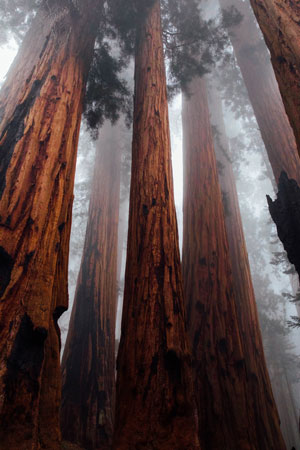
Arguably the most important part of the entire article, preparing for the Lost Coast. Now the first thing you should do to prepare is go off-roading. Of course, this is a fun way to prepare, but you have to have experience before you try and conquer this trail. Once you have some experience under your belt, then you should do some prep on your vehicle. This could include increasing the suspension or decreasing the tire pressure to be optimal for the trail and off-roading in general. Once you have all of these steps completed you can simply prepare by putting together your normal camping gear for the trip ahead.
When preparing for the trip one thing you definitely do not want to forget about is the weather conditions. Based on how the conditions are and the immense amount of the sun you will likely experience, we highly suggest spending a lot of your days out in the sun prior to making your trip to the area. Getting exposure to the sun early and often will have you prepared for the hot conditions of the coast in the summer. This will also give you a better idea of how to prepare for the conditions before you learn what does and does not work the very hard way. It is better to experiment with different things out in the sun at home before you turn up the temperature and sun exposure during your lengthy adventure. Now we do not recommend purposely depriving yourself of water leading up to the trip since that does not have much benefit. Instead, go in ahead of time drinking plenty of water prior to your trip to have your body as hydrated as possible before it is too late.
Regardless of your overlanding experiences prior to this trip, it will still be a really fun time. There is something for both the beginners and the more experienced overlanders. The trail itself won’t be too difficult, just make sure you come prepared for the outdoor environment. To emphasize some things again, make sure to bring equipment to protect you from the sun. You will also need to bring lots of water as well. Whenever you choose a camping spot make sure you reserve it ahead of time. With all of that in mind, go enjoy your trip overlanding the Lost Coast!’
Where to Camp Along the Lost Coast Backcountry?
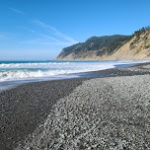
Usal Beach Camping near Whitethorn, CA
California State Parks | DevelopedLocation: 39.83734939126475, -123.8439
Cost: $0
View DetailsMattole Beach Campground near Petrolia, CA
Bureau of Land Management (BLM) | DevelopedLocation: 40.28918, -124.355879
Cost: $8
View DetailsNeedle Rock Camp near Sinkyone Wilderness State Park
California State Parks | CampgroundLocation: 36.5147855, -126.8160017
Cost: $25 per night
View DetailsBear Harbor Campground near Whitethorn, CA
California State Parks | CampgroundLocation: 39.8760076, -123.9634498
Cost: $25 per night
View DetailsHumboldt State Redwoods near Weott, CA
California State Parks | CampgroundLocation: 40.311634, -123.9780505
View DetailsWailaki Campround near Whitethorn, CA
Bureau of Land Management | CampgroundLocation: 40.0182035, 124.0049998
View DetailsNadelos (walk-in sites) near Whitethorn, CA
Bureau of Land Management | Walk In SitesLocation: 40.021924, -124.006602
View DetailsTolkan Campground near Whitethorn, CA
Bureau of Land Management | CampgroundLocation: 40.081651, -124.057402
View DetailsArthur W. Way County Park near Petrolia, CA
City of HumboltLocation: 40.2683353, -124.2326919,17z
